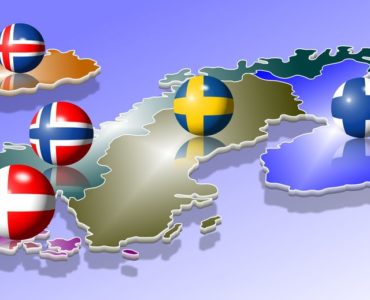The Slavs do not represent a single nation. The term Slavic is both a noun and an adjective. As a noun, Slavic designates a group of languages of the Indo-European family. In Europe, there are currently 300 million Slavic speakers. The adjective Slavic describes the belonging to the ethnic group of the Slavs. This post will shed some light on who are the Slavs and what are the Slavic languages.
The legend of the Slavs
Little is known about the Slavs, but a legend from the 14th century says that at the very beginning there were three brothers. One day, the siblings separated and each of the three brothers took possession of a country. Rous headed east, Czech headed south, and Lech stayed put in Poland.
This legend only evokes the beginnings of the Slavic expansion which would have started in the 5th or 6th century. But if the dates are unclear, the geographical starting point is even more so. But in all likelihood, this conquest of Europe would have been initiated by the Slavs from the north of the Carpathians, in the current region of Kyiv, Ukraine.
Migration and separation of the Slavs
Breeders, hunters and fishermen, these sedentary people began their great migration in the 6th century under the threat of the Huns and the Avars. They reached the Elbe in the West, Greece in the South and reached the Black Sea in the East. Anarchic, they failed to organize themselves in the image of the great medieval empires.
The Northwest Slavs were annihilated by the Germans who pushed to present-day Czechoslovakia, Poland and Slovenia. For their part, the Magyars ( 10th century) separated East and West Slavs and South Slavs, then imposed themselves in Croatia (11th century) and Slovakia (12th century ) .
Evangelism of the Slavs
These migrations were accompanied by the evangelization of the Slavs. The Greek apostles Cyrille and Methodius Christianized Moravia (formerly a region of central Europe) and gave the Slavs their first alphabet which would become the matrix of Cyrillic. They also give them their liturgical language: Slavonic. Serbs and Bulgarians were converted to Orthodoxy while Poles and Croats prefered Catholicism.
This period is fundamental for the Slavs because it marks the separation between Orthodox Slavs of Cyrillic script and Catholic Slavs of Latin script. Western Slavs joined Rome while Eastern and Southern Slavs remained Orthodox.
Liberation of the Slav Nations
The end of the 19th century and the beginning of the 20th century marked the liberation of the Slav nations with the resurrection of Bulgaria in 1885 and Poland in 1918. The same year saw the birth of two new nations: Czechoslovakia and Yugoslavia.
Slavic languages
Today there are 300 million Slavs in Europe, making Slavic languages the largest ethnolinguistic group on the old continent. There are three major families of Slavs who practice different languages.
East Slavic languages
The Eastern Slavs constitute the largest of the three families since there are 200 million of them. A people located in eastern Poland, this eastern group is made up of Slavs from Russia, Ukraine and Belarus. The Slavic languages practiced by Eastern Slavs are speak Russian, Ukrainian and Belarusian.
These three East Slavic languages are very close and use variants of the Cyrillic alphabet. Mastering the Russian alphabet therefore makes it easy to read Belarusian and Ukrainian. Another point in common between these three peoples: they are all predominantly Orthodox.
West Slavic languages
Like their eastern cousins, the western Slavs are scattered over three countries: Poland, the Czech Republic and Slovakia. These Central European Slavs today number about 55 million.

There are two major differences from their eastern counterparts. First of all, from a religious point of view, they are mainly Catholic. From a linguistic point of view then, their alphabet is Latin. Polish, Czech and Slovak are spoken there. The official languages in each of the three countries, they are spoken by approximately 40 million, 4 million and 10 million speakers respectively.
South Slavic languages
The southern Slavs constitute the third and last group of Slavs in Europe. Located in the south of the continent, they are also called Balkan Slavs. They are found in seven different countries: Croatia, Bosnia, Montenegro, Bulgaria, Slovenia, Serbia, Macedonia. Descendants of migrations initiated in the 6th century and former members of the former Yugoslavia – country of the southern Slavs – the southern Slavs form a community of 25 million Slavophones.
There are three main South Slavic languages: Slovenian, Bulgarian and BSCM. These three languages are very close to each other. BSCM stands for Bosnian-Serbian-Croatian-Montenegrin. This is the term used by linguists so as not to offend any nation because from their point of view, it is the same language spoken in each of these four countries. But in order not to favor anyone, it is called BSCM. However, each country considers that it has its own language.
One other interesting linguistic fact, the Balkan countries make joint use of the Latin and Cyrillic alphabets depending on the country and their religious beliefs.
GTS provides professional translation services in all Slavic languages. Get a free quote for Slavic language translation services by clicking here.





